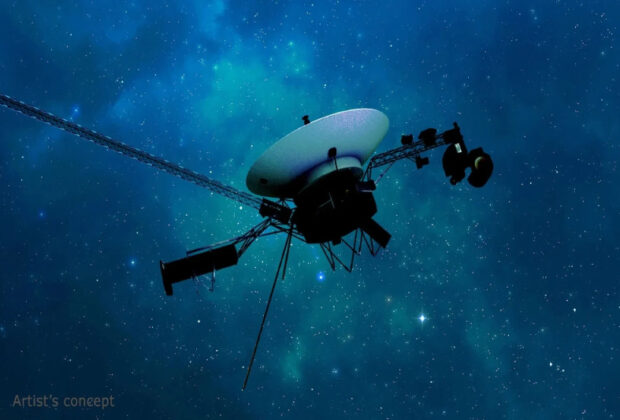According to NASA officials’ blog post, “The transmitter shut-off seems to have been prompted by the spacecraft’s fault protection system, which autonomously responds to onboard issues,” NASA officials wrote in the blog post. “For example, if the spacecraft overdraws its power supply, fault protection will conserve power by turning off systems that aren’t essential for keeping the spacecraft flying,” the researchers continued.
Following a technical issue that caused the spacecraft’s primary radio transmitter to shut down, scientists were unable to communicate with the interstellar Voyager 1 probe from October 19 to October 24, according to a blog post by NASA authorities. While evaluating the situation, engineers have since made communication with Voyager 1’s less reliable backup transmitter, which hasn’t been in service since 1981.
In the blog post, NASA officials stated that the spacecraft’s fault protection system, which reacts to onboard problems on its own, appears to have caused the transmitter shut-off. In the event that the spacecraft’s power supply is overdrawn, “fault protection will conserve power by turning off systems that aren’t essential for keeping the spacecraft flying,” the researchers continued, referring to the primary radio transmitter of the vessel.
The identification of the underlying problem may take a few extra days or weeks after communication has been restored.
IT Interstellar
It’s difficult to communicate with Voyager 1 and its companion ship, Voyager 2. The most distant man-made object in the cosmos is Voyager 1, which is presently over 15 billion miles (24 billion kilometers) from Earth. At its current location beyond the solar system, it takes 23 hours for commands to reach the spacecraft from Earth, and it takes an additional 23 hours for Voyager 1 to respond.
The current communication failure started on Oct. 16 when engineers instructed Voyager 1 to activate one of its heaters, according to NASA. The prompt instead activated Voyager 1’s fault prevention system, even though the ship should have had enough power to carry out this task.
NASA engineers were unable to pick up the spacecraft’s signal two days later when they searched for Voyager 1’s response using the Deep Space Network, a global network of radio antennae meant to support interplanetary missions. Later that day, the team finally located the signal from Voyager 1. The following day, October 19, however, communication with Voyager “appeared to stop entirely,” according to NASA.
It is believed by engineers that Voyager 1’s fault protection system activated twice more at this time. As a result, NASA said the spacecraft had to switch to its backup S-band radio transmitter, which operates on a different frequency and is “significantly fainter” than the main X-band transmitter.
“While the S-band uses less power, Voyager 1 had not used it to communicate with Earth since 1981,” the government stated.
To verify that the spacecraft was actually using its backup S-band transmitter, engineers issued a command on October 22. Two days later, the team was able to successfully get back in touch with Voyager 1. Now, NASA engineers are trying to identify the problem that set off Voyager 1’s fault prevention mechanism and get it back to normal.
In 1977, Voyager 1 and 2 were launched. Humanity’s first (and, thus far, only) interstellar vehicles, they are the only two spacecraft to have passed beyond the heliosphere, the bubble of charged solar particles that envelops our solar system. Technical problems are increasing as the spacecraft get older and farther away from Earth. Thus far, scientists have been able to maintain the functionality of both Voyager probes by diagnosing these interstellar IT issues from billions of kilometers away.








